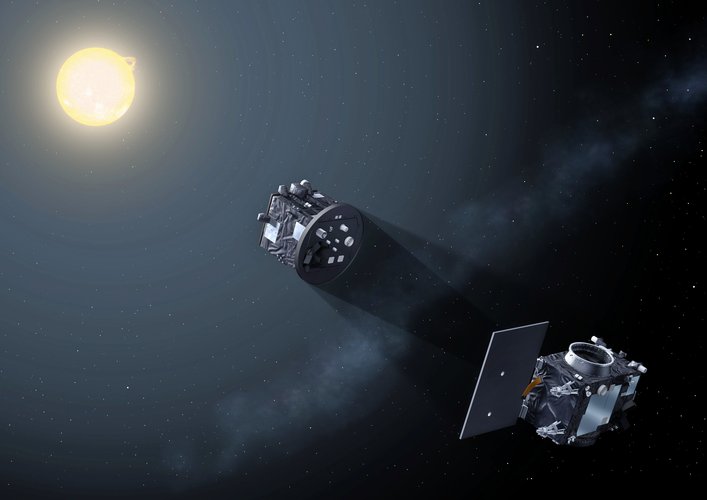
As a follow-up, a smaller version of the LED target was mounted on a rail-mounted robotic arm in ESTEC’s Guidance Navigation and Control Rendezvous, Approach and Landing Simulator, or GRALS. This 33-m long facility is used to simulate close approaches, rendezvous and docking between space objects.
Jonathan Grzymisch, Proba-3 Guidance Navigation and Control system engineer, explains: “The robotic arm moved the LED target along a pre-programmed pattern as the cameras watched, allowing the instrument software to calculate its relative dynamic trajectory continuously. This allows us to characterise the sensor performance on a deterministic dynamic basis. Both tests performed well, thanks to the cooperation of ESTEC’s Facility Management and the relevant technical sections.”
Proba-3’s vision-based sensor system has been developed by the Technical University of Denmark (DTU). The team could not be present in person at ESTEC due to COVID-19 restrictions, but supported the testing remotely while ESA engineers prepared and ran the test.

